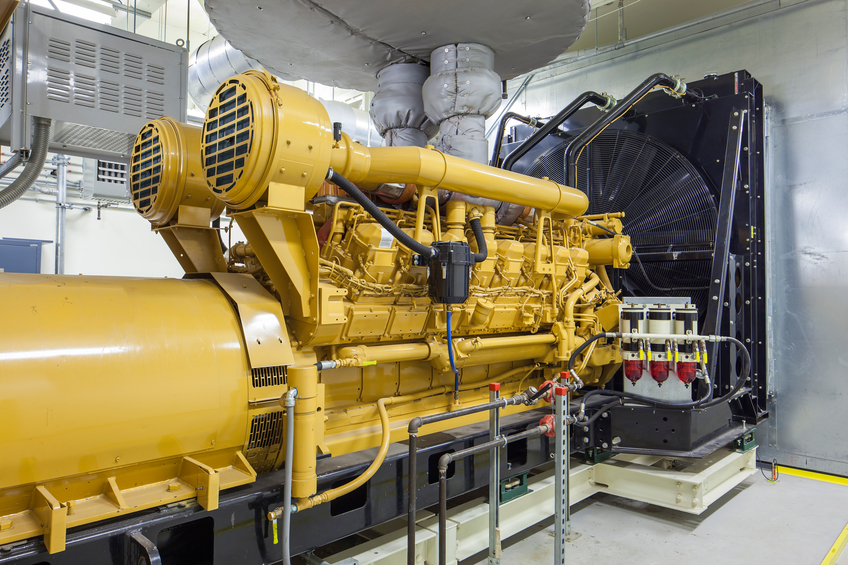Alberta Electrical 30 PDH Discount Package 1
Courses in this Package
Overview of Electrical Theory (E04-053)
Alternating Current (AC) Systems (E08-001)
Fundamentals of Reactive Power and Voltage Regulation in Power Systems (E03-011)
Continuous Energy Improvement in Motor Driven Systems (E08-007)
Electrical Distribution Systems (E02-004)
Electrical Test Instruments and Measuring Devices (E02-003)
Receivers: From Spark to 16-Qam (E03-023)

This online engineering PDH course provides an overview of electrical theory and presents the basic electrical concepts used in the industry.
A basic understanding of electrical theory is important in any professional environment. Scientists, such as Faraday, Ohm, Lenz, and Kirchhoff have found that electricity seems to behave in a constant and predictable manner in a given condition. These scientists observed and described the predictable characteristics of electricity and electric current in the form of certain rules. These rules are often referred to as "laws".
Although we cannot see the electrons in motion, through experiments and observation we know how they behave. By learning the laws applying to the behavior of electricity and by understanding the methods of producing, controlling, and using it, electricity may be "learned" without ever actually seeing it.
This 4 PDH online course is applicable to electrical and mechanical engineers as well as other professionals who are interested in learning more about the theory and basics of electricity.
This PE continuing education course is intended to provide you with the following specific knowledge and skills:
- Familiarizing with the basic electrical terms and symbols
- Learning about the different types of electricity
- Learning about the atomic structure and electrical charge
- Knowing Ohm’s Law and the relationship between current, voltage and resistance
- Understanding the principles, characteristics and applications of DC and AC
- Familiarizing with basic electrical circuit requirements and characteristics
- Learning how to perform series and parallel circuit computations
- Gaining an overview of the construction of an electrical circuit
Upon successful completion of the quiz, print your Certificate of Completion instantly. (Note: if you are paying by check or money order, you will be able to print it after we receive your payment.) For your convenience, we will also email it to you. Please note that you can log in to your account at any time to access and print your Certificate of Completion.

This online engineering PDH course introduces the basic concepts of alternating current (AC) electrical circuits and discusses the associated terminology. It describes inductance and capacitance and their effects on AC circuits. It presents power calculations for single-phase and three-phase AC circuits and includes the power triangle concept.
Furthermore, it describes the operating characteristics of AC generators and includes terminology, methods of voltage production, and methods of paralleling AC generation sources. This course also explains the basic operation and application of voltage regulators. Finally, it explains the theory of operation of AC motors and discusses the various types of AC motors and their application.
This 8 PDH online course is applicable to electrical and computer engineers, design and construction personnel, technical staff and facility operators who are interested in gaining a better understanding of AC systems.
This P.Eng. continuing education course is intended to provide you with the following specific knowledge and skills:
- Understanding AC generation and analysis
- Learning inductance, capacitance, impedance and resonance
- Understanding the power triangle
- Knowing three-phase circuits
- Understanding AC generator components, theory and operation
- Identifying and learning the different components of a voltage regulator
- Understanding AC motors and different their types
- Understanding the transformers and their different types
In this professional engineering CEU course, you need to review Modules 7 to 13 of the Department of Energy Publication DOE-HDBK-1011/2-92, "Electrical Science" publication.
Upon successful completion of the quiz, print your Certificate of Completion instantly. (Note: if you are paying by check or money order, you will be able to print it after we receive your payment.) For your convenience, we will also email it to you. Please note that you can log in to your account at any time to access and print your Certificate of Completion.

This online engineering PDH course presents an overview of modern practices in raising efficiency of power systems through application of reactive power and voltage regulation.
It starts with discussion about the structure of power systems from a power plant to the customer, and typical power system voltages in different parts of the system. Then, it explains how power losses and voltage drops in the power system may be reduced through compensation of reactive power either by shunt capacitors for an inductive load or shunt reactors for a capacitive load. Arrangement of a shunt capacitor bank and a sequence of its design is considered as well. Explanations are supported by numerous drawings, photos of actual equipment and the example showing how to design a 230 kV shunt capacitor bank. Finally, it discusses reasons for voltage regulation in power systems and means to perform. Explanations are supported by photos and example showing how transformer winding taps may be selected.
This 3 PDH online course is applicable to power industry engineers and designers as well as colleges and universities faculty involved with either practical application of reactive power and voltage regulation or teaching its concepts.
This P.Eng. continuing education course is intended to provide you with the following specific knowledge and skills:
- Understanding why reactive power needs to be regulated
- Drawing a power triangle
- Listing the main equipment for reactive power regulation
- Sizing and designing a shunt capacitor bank for a specific power factor improvement
- Describing the mission of voltage regulation and means used to perform it
- Selecting a no-load taps on the primary side of transformer for specific limits of secondary voltage
In this professional engineering CEU course, you need to review the course document titled, "Fundamentals of Reactive Power and Voltage Regulation in Power Systems".
Upon successful completion of the quiz, print your Certificate of Completion instantly. (Note: if you are paying by check or money order, you will be able to print it after we receive your payment.) For your convenience, we will also email it to you. Please note that you can log in to your account at any time to access and print your Certificate of Completion.

This online engineering PDH course presents the fundamental information and necessary guidance required to assist the Manufacturing and Process industries in optimizing their electric motor driven systems which leads to substantial energy / cost savings.
Electric motors are among the least well-managed industrial equipment, even though motor-driven equipment accounts for approximately 70% of the electrical energy consumed by process industries and approximately 90% for electrical intensive industries. Motors that are not properly managed can result in billions of dollars in wasted energy and operating costs to an industry.
A detailed analysis of the U.S. motor systems inventory indicates that this energy use could be reduced by 11% to 18% if plant managers implement all cost-effective applications of mature and proven energy efficiency technologies and practices. It is worth noting that the suggested improvements are not necessarily limited to the U.S., but can be implemented in any industry around the world that utilizes motor driven systems.
This 8 PDH online course is applicable to electrical, mechanical, and industrial engineers as well as other technical personnel interested in learning more about improving the operation of motor driven systems.
This P.Eng. continuing education course is intended to provide you with the following specific knowledge and skills:
- Familiarizing with motor energy management and best practices
- Understanding the different types of utility charges
- Learning about the steps involved in conducting a motor survey
- Familiarizing with motor specification and selection considerations
- Estimating motor load and efficiency
- Analyzing motor efficiency opportunities
- Conducting plans for improving motor efficiency
- Familiarizing with the opportunities to improve system efficiencies
- Understanding the importance and practicality of power factor correction
Upon successful completion of the quiz, print your Certificate of Completion instantly. (Note: if you are paying by check or money order, you will be able to print it after we receive your payment.) For your convenience, we will also email it to you. Please note that you can log in to your account at any time to access and print your Certificate of Completion.

This online engineering PDH course describes basic electrical distribution systems including system components and protection devices. It also presents the characteristics of system design, such as circuit breakers, motor controllers, wiring schemes and grounding, to ensure personnel and equipment safety.
This 2 PDH online course is applicable to electrical and computer engineers, design and construction personnel, technical staff and facility operators who are interested in gaining a better understanding of electrical distribution systems.
This P.Eng. continuing education course is intended to provide you with the following specific knowledge and skills:
- Understanding of system components and protection devices
- Learning about circuit breakers and motor controllers
- Understanding wiring schemes and grounding
In this professional engineering CEU course, you need to review Module 15, "Electrical Distribution Systems" of the Department of Energy Publication DOE-HDBK-1011/2-92, "Electrical Science".
Upon successful completion of the quiz, print your Certificate of Completion instantly. (Note: if you are paying by check or money order, you will be able to print it after we receive your payment.) For your convenience, we will also email it to you. Please note that you can log in to your account at any time to access and print your Certificate of Completion.

This online engineering PDH course describes electrical measuring devices such as voltmeters, ammeters, ohmmeters and wattmeters. It also describes test equipment such as multimeters and meggers. It discusses the electrical parameters measured and the principles of operation of common instruments.
This 2 PDH online course is applicable to electrical and computer engineers, design and construction personnel, technical staff and facility operators who are interested in gaining a better understanding of electrical test instruments and measuring devices.
This P.Eng. continuing education course is intended to provide you with the following specific knowledge and skills:
- Understanding meter movements
- Learning about the various electrical measuring devices (voltmeters, ammeters, ohmmeters and wattmeters)
- Learning about the various electrical test equipment (multimeters and meggers)
In this professional engineering CEU course, you need to review Module 14, "Test Instruments and Measuring Devices" of the Department of Energy Publication DOE-HDBK-1011/2-92, "Electrical Science".
Upon successful completion of the quiz, print your Certificate of Completion instantly. (Note: if you are paying by check or money order, you will be able to print it after we receive your payment.) For your convenience, we will also email it to you. Please note that you can log in to your account at any time to access and print your Certificate of Completion.

This online engineering PDH course covers the development of radio receivers from the late 1800s to the present, simultaneously in separate dimensions: Time and Frequency. As communications technology has progressed since the late 1800s, so has the upper frequency limit. The advancement of technology and upper frequency have happened in parallel so organizing this course in chronological order dovetails well with increasing frequencies.While circuitry is not addressed except in a very few cases where it cannot be avoided, there is extensive information to cover the evolution of radio receivers.
In the last few decades, incredible advances in computer technology have led to the ability to digitize received signals for computer processing. This brings tremendous advantages, as adding software capabilities does not require hardware changes. For example, a receiver can be configured with a wide selection of filter bandwidths to allow matching the filter to the incoming signal. Such a system would be unaffordable in hardware. As analog-to-digital conversion becomes possible at ever higher frequencies, the conversion point has been migrating closer and closer to the antenna.
We are now in the era of the software-defined-radio. Regardless, the physics of the universe still applies, and the techniques developed over the last century are still relevant, even if incorporated into a computer program. George Santayana warned that those who ignore history are doomed to repeat it. While he did not have the evolution of communications gear in mind, his rule applies here too.
This 3 PDH online course is intended for electrical or communications engineers, design professionals, and others interested in gaining an understanding of radio receivers.
This P.Eng. continuing education course is intended to provide you with the following specific knowledge and skills:
-
Understanding from early experiments in what came to be known as wireless
-
Learning about wireless spark transmitters and receivers
-
Learning about CW communication
-
Learning about AM broadcast reception and its evolution to today
-
Learning about HF band shortwave radio and the move to single sideband
-
Learning about FM broadcast reception
-
Learning about VHF radios and repeaters
-
Learning about data radios and modulation techniques
Upon successful completion of the quiz, print your Certificate of Completion instantly. (Note: if you are paying by check or money order, you will be able to print it after we receive your payment.) For your convenience, we will also email it to you. Please note that you can log in to your account at any time to access and print your Certificate of Completion.